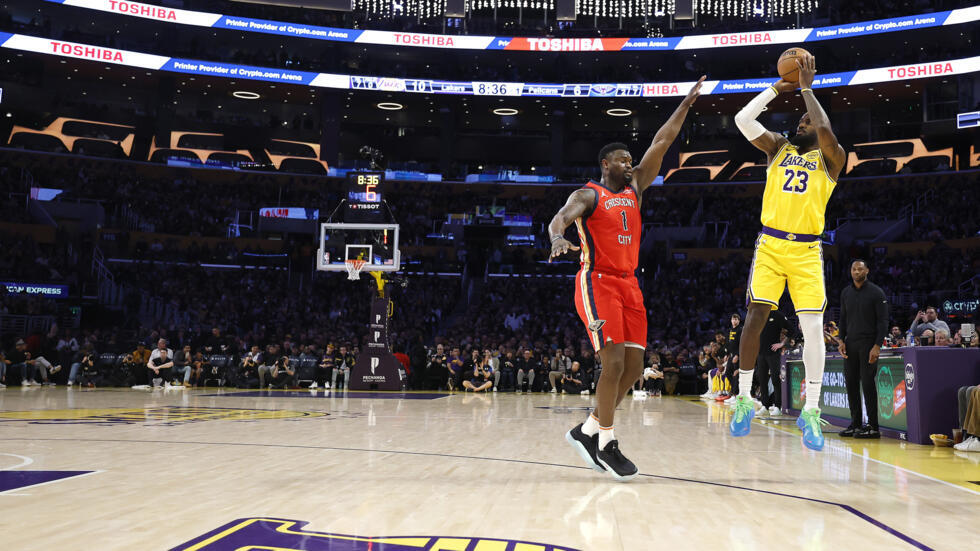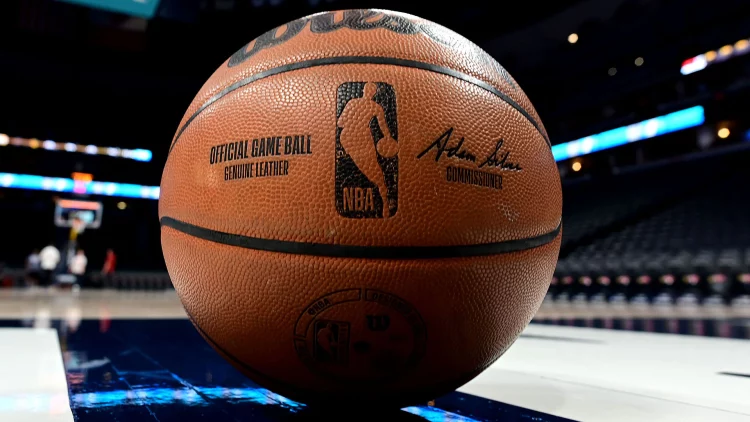Introduction: The NBA’s Expanding Global Reach
The National Basketball Association (NBA) has been a cornerstone of global sports for decades, establishing itself as one of the most popular and influential professional sports leagues in the world. With players like Michael Jordan, LeBron James, Kobe Bryant, and Stephen Curry becoming household names, the NBA has transformed basketball from a predominantly American pastime into a global phenomenon.
One of the key driving forces behind this success has been the league’s efforts to expand its reach internationally, and nowhere is this more significant than in China. Over the past 20 years, the NBA has made tremendous inroads into the Chinese market, where basketball has grown exponentially in popularity. With over 300 million basketball fans in the country and a rapidly expanding middle class, China represents one of the most lucrative and untapped markets for the NBA.
But as we look to the future, the question arises: Can the NBA successfully enter the next golden era in China? Will the NBA be able to build on its already impressive foothold, overcome political and cultural challenges, and establish a new era of basketball dominance in one of the world’s largest and most competitive markets? In this article, we will explore the history of the NBA’s expansion into China, the current state of the Chinese basketball market, and the future prospects for the league in this massive, high-stakes market.
Section 1: The NBA’s Historical Journey into China
1.1 The Initial Breakthrough: 1990s and Early 2000s
The NBA’s first major push into the Chinese market began in the 1990s when the league started to recognize the vast potential in China. The catalyst for this growth came in part from the emergence of Yao Ming, a Chinese basketball player who made history by being selected as the first overall pick in the 2002 NBA Draft by the Houston Rockets.
Yao Ming’s entry into the NBA was nothing short of transformative. His rise to stardom bridged the gap between China and the United States, and the NBA capitalized on his popularity by forging deeper ties with the Chinese audience.
- Yao Ming’s Impact: Yao Ming became not only a sensation in the NBA but also an ambassador for basketball in China. His games were broadcast across the country, and his presence in the league generated massive interest in the NBA. He also helped to promote NBA basketball camps and youth programs throughout China, helping to nurture the next generation of players.
- NBA China: In 2008, the NBA officially established NBA China, a joint venture aimed at overseeing the league’s operations in China. The move was a clear indication that the NBA had long-term ambitions in the country. NBA China helped to organize events, sponsorship deals, broadcasting rights, and grassroots programs, all of which contributed to growing the NBA’s fan base.
1.2 Increasing Popularity and Challenges in the 2010s
By the 2010s, the NBA had firmly established itself as one of the most popular sports leagues in China, but challenges began to arise. The NBA’s popularity skyrocketed with the emergence of superstars like LeBron James, Kobe Bryant, and Stephen Curry, whose global appeal helped fuel the NBA’s rise. The league also benefited from the Chinese government’s support for basketball, which aligned with the country’s growing interest in Western sports.
However, there were challenges along the way, particularly in relation to the political tensions between the United States and China. In 2019, a tweet from then-Houston Rockets general manager Daryl Morey in support of Hong Kong protests sparked an international controversy, leading to a significant strain on NBA-China relations. The incident resulted in the suspension of some NBA broadcasts and the pulling of NBA-sponsored events in China, highlighting how political issues can have far-reaching consequences for sports organizations trying to navigate the delicate relationship between the U.S. and China.
Despite this, the NBA quickly recovered by implementing damage control strategies and focusing on rebuilding its relationship with Chinese fans through charitable efforts, community engagement, and apology tours by players and officials.
Section 2: The Current State of Basketball in China
2.1 A Massive, Growing Fanbase
China is home to an estimated 300 million basketball fans, making it one of the largest basketball markets in the world. This number is not only a testament to the sport’s massive appeal in the country, but also an indicator of the potential for future growth. With China’s rapidly expanding middle class and the country’s increasing influence on the global economy, basketball is well-positioned to become even more central to Chinese culture.
- Youth Basketball Programs: In recent years, the NBA has heavily invested in youth basketball development in China. Programs like the NBA Global Academy and basketball camps have become increasingly popular, helping to identify and cultivate young talent. Moreover, the league has developed strong partnerships with Chinese universities, and there has been an increased focus on grassroots initiatives aimed at growing the sport in cities across the country.
- Social Media and Streaming: Social media platforms like Weibo and WeChat, as well as streaming services like Tencent Sports, have provided platforms for Chinese fans to engage with the NBA. Tencent, the official broadcaster of the NBA in China, has millions of subscribers and viewers, and the accessibility of games via streaming has contributed to basketball’s penetration into every corner of China. The NBA’s embrace of digital media has helped to solidify its hold on younger audiences who favor streaming over traditional television broadcasts.
2.2 The Influence of the Chinese Basketball Association (CBA)
The Chinese Basketball Association (CBA) has emerged as the domestic basketball league in China and serves as both a competitor and a partner for the NBA. While the CBA has grown significantly over the past two decades, the NBA still enjoys a massive popularity advantage. However, the NBA’s ongoing influence on Chinese basketball culture has also led to an improvement in the level of play in the CBA, which has attracted some former NBA players, such as Stephon Marbury and Tracy McGrady, and young talent like Zhou Qi and Wang Zhelin.
Despite the CBA’s rise, the NBA remains the gold standard in basketball, and Chinese fans continue to watch the best players in the world compete in the NBA rather than their domestic league. This sets the stage for continued growth for the NBA in China, but it also shows that there is competition for fans’ attention, especially as the CBA continues to improve its product.

Section 3: The Future of the NBA in China – Can It Enter the Next Golden Era?
3.1 New Generations and Emerging Markets
The future of the NBA in China lies in its ability to engage the next generation of fans. As the country continues to modernize and develop, the demand for high-quality sports content is expected to grow. The NBA has the opportunity to tap into this demand by offering new forms of content, from virtual reality broadcasts to interactive experiences.
- Expanding Digital Content: The NBA has already begun to experiment with immersive digital experiences, such as NBA 2K esports leagues and virtual meet-and-greets with players. These digital platforms give younger Chinese fans a way to engage with the league beyond traditional media. The introduction of virtual basketball leagues or interactive games could make fans feel more connected to the players, teams, and overall basketball culture.
- Increased Focus on Women’s Basketball: Another key opportunity for the NBA in China is the growing interest in women’s sports. The WNBA has seen increasing attention from Chinese fans, and this market could be further cultivated by hosting women’s basketball tournaments or exhibition games in China. Focusing on both men’s and women’s basketball could help the NBA attract a broader, more diverse fanbase.
3.2 Overcoming Political and Cultural Hurdles
Despite the tremendous potential, the NBA must navigate ongoing political and cultural hurdles in its efforts to dominate the Chinese market. The 2019 controversy over Daryl Morey’s tweet has left a scar, and the NBA has had to rebuild relationships with both fans and the Chinese government. Ensuring that the league continues to respect China’s political sensitivities while also preserving its values will be critical.
Additionally, the NBA will need to adjust its strategies for cultural integration. While basketball is popular in China, the Chinese market is unique, with its own set of consumer behaviors and entertainment preferences. For example, the NBA needs to be more attuned to the specific advertising preferences of Chinese audiences and cater to the unique tastes and interests of fans in different regions of China.
3.3 The Competitive Landscape: Will the NBA Face Stronger Rivalries?
The NBA’s competition in China will only intensify. The CBA continues to develop its level of play, and there are emerging international leagues that could potentially pose a challenge to the NBA. Moreover, football (soccer) continues to be a dominant force in China, with the Chinese Super League investing heavily in attracting foreign talent. For the NBA to maintain its status as the premier basketball league in China, it must stay ahead of the curve by constantly improving the quality of its product and fostering even deeper fan loyalty.
Conclusion: Can the NBA Secure the Next Golden Age in China?
The NBA’s potential to enter the next golden era in China is undeniable, but success will depend on several factors, including how well the league can navigate political challenges, how it engages with younger generations of fans, and how it adapts to China’s unique cultural and commercial landscape. The NBA’s ability to build long-term relationships with fans, sustain its digital content strategy, and tap into the growing demand for sports in China will be crucial to its success in the coming years.
Ultimately, while the NBA has already established a significant presence in China, it is the next decade that will reveal whether the league can fully capitalize on this massive market and usher in an era of unprecedented global dominance, not just in the United States, but in China, the world’s most populous and rapidly growing economy.


































Discussion about this post